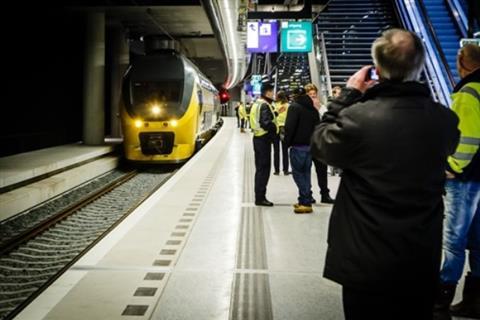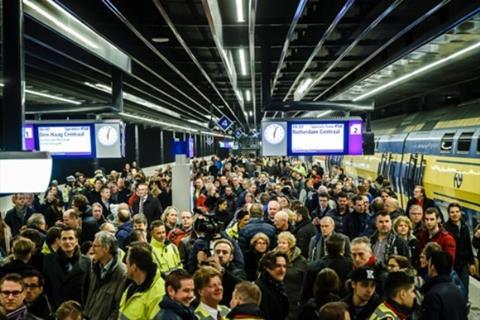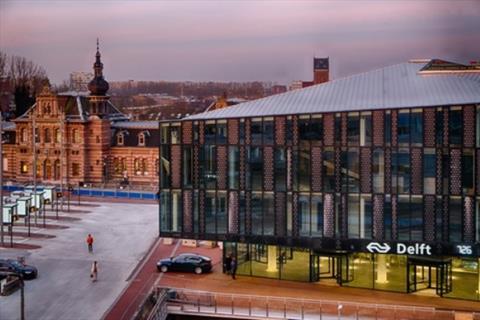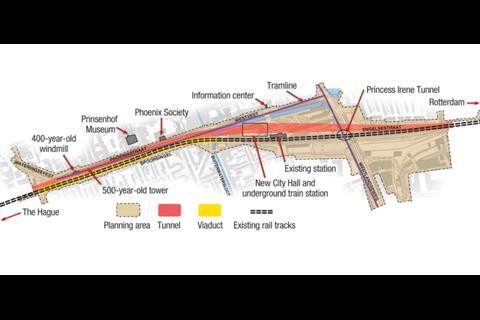NETHERLANDS: Trains between Rotterdam and Den Haag have started using the new underground station in Delft, following the completion of a week-long blockade to transfer services from the elevated alignment that has carried the main line through the city for more than 150 years.
Under the ‘Spoorzone Delft’ project, ProRail’s double-track viaduct has been replaced by a 2·3 km tunnel. This has two tracks, with longer-term plans for four.
As well as reducing the noise of trains running through the city, the tunnel will enable the demolition of the viaduct over the coming months. This will free up around 40 ha of land for redevelopment, ans better connect the city centre with residential neighbourhoods to the west and south. The project includes the construction of a city park and water features, as well as new offices and housing.
Test trains have been running through the underground station since November, using temporary connections at each end of the tunnel. After the last trains operated over the viaduct on the evening of February 20, ProRail’s contractors Strukton Rail took over the site to slew the approaches and connect up the remaining tracks. This required around 200 m of new track and changes to the 1·5 kV DC overhead electrification, as well as resiting a number of signals. The work was completed and tested in time for passenger services to begin using the underground station early on the morning of February 28.
The new station was formally inaugurated on the same day, when the city’s mayor greeted the arrival of a special train carrying 400 guests including NS Reizigers Chairman Marjan Rintel, ProRail Director of Major Projects Patrick Buck, City of Delft Alderman Lennart Harpe and Ministry of Infrastructure Director General Lidewijde Ongering, as well as project staff and local residents.
Although the new alignment has been designed for 140 km/h running, non-stop trains have been temporarily restricted to 80 km/h, pending research into problems experienced on the first day with air pressure pulses affecting the operation of the revolving doors at the station.
Strukton Rail has been working on the project since 2013, and began tracklaying in the tunnel at the beginning of 2014. This required 16 000 tonnes of ballast, 16 000 sleepers and 20 000 m of rail. The company was also responsible for installing the overhead catenary, a new traction substation and the signalling in the tunnel.





















